Lauki Raita is a simple yet refreshing side made with grated bottle gourd and yogurt. It’s a cooling side dish to pair with biryani, pulao, or any flavored rice. Made in minutes and with simple ingredients, this raita can be served alongside curries!
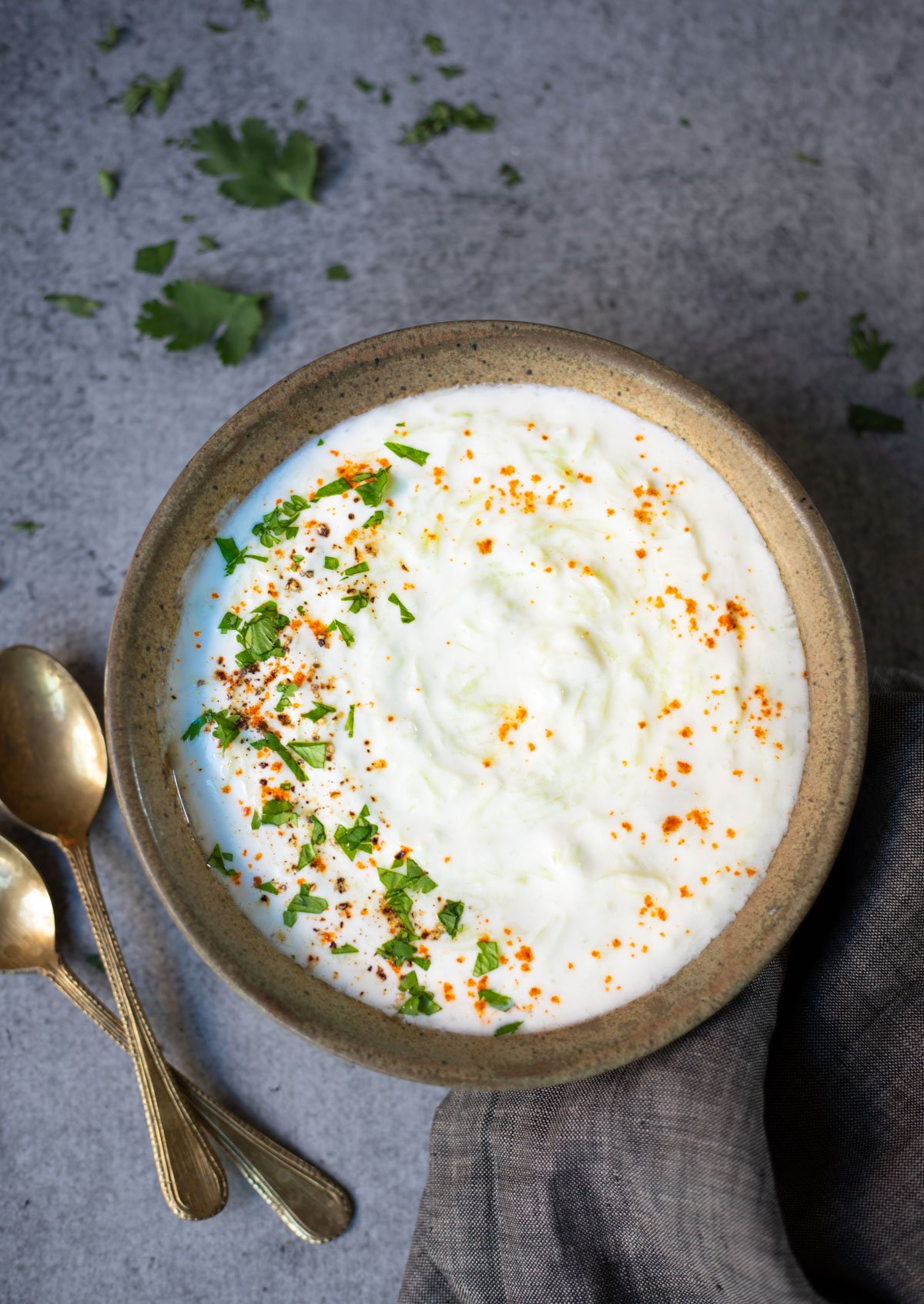
This cooling yogurt side is also called Lauki ka raita or Ghiya raita. It is made from grated lauki (bottle gourd), yogurt, and spices.
Bottle gourd is known as Lauki or Doodhi in India and is used in a variety of north and south Indian dishes.
As my mom was visiting recently, she made her delicious and authentic lauki raita for dinner. As this raita is not something you will find in restaurants, I wanted to share the recipe with you. This raita is quite popular in North Indian homes, especially in Punjabi households.
Lauki can be prepared in an Instant Pot or a stovetop pressure cooker. I used the Instant Pot to boil the Lauki for this raita prep. Read on to learn the detailed tips for not overcooking lauki when making this raita.
What is Raita?
Raita is a side dish famous in the Indian sub-continent as an accompaniment to lunch or dinner. It is made with whisked and creamy yogurt, and often vegetables, fruits, and/or spices are added to it. Raita is frequently compared to tzatziki, the Greek version of yogurt, but they are distinctly different, with few common preparation steps.
Raita helps in cooling the palate after a sumptuous meal. It also aids in the digestive process.
I like to make yogurt for raita in the Instant Pot. Here is my homemade pot-in-pot yogurt recipe.
Also, check out my other popular raita recipes: Mint Raita, Cucumber Raita, and Boondi Raita.
What is Lauki?
Lauki is the Indian name for bottle gourd. It is also known as Dhoodhi in many parts of northern India. Lauki is a versatile vegetable that can be cooked in both savory and sweet recipes.
Bottle gourd can be used in many curries, such as this Lauki Curry, Lauki Kofta, and this Lauki Chana Dal recipe.
Nutritious Benefits of Lauki
Lauki has many nutritional properties that are good for the body’s immune system.
- Lauki has a high water content
- It is a rich source of many minerals and vitamins
- It is easily digestible
- It is perfect for keeping your body cool during summer
Lauki and yogurt make a nutritious combination that helps you curb cravings while on a diet plan. Yogurt has a good amount of protein and calcium, and lauki is high in fiber content. Together, they are a good combination for weight loss.
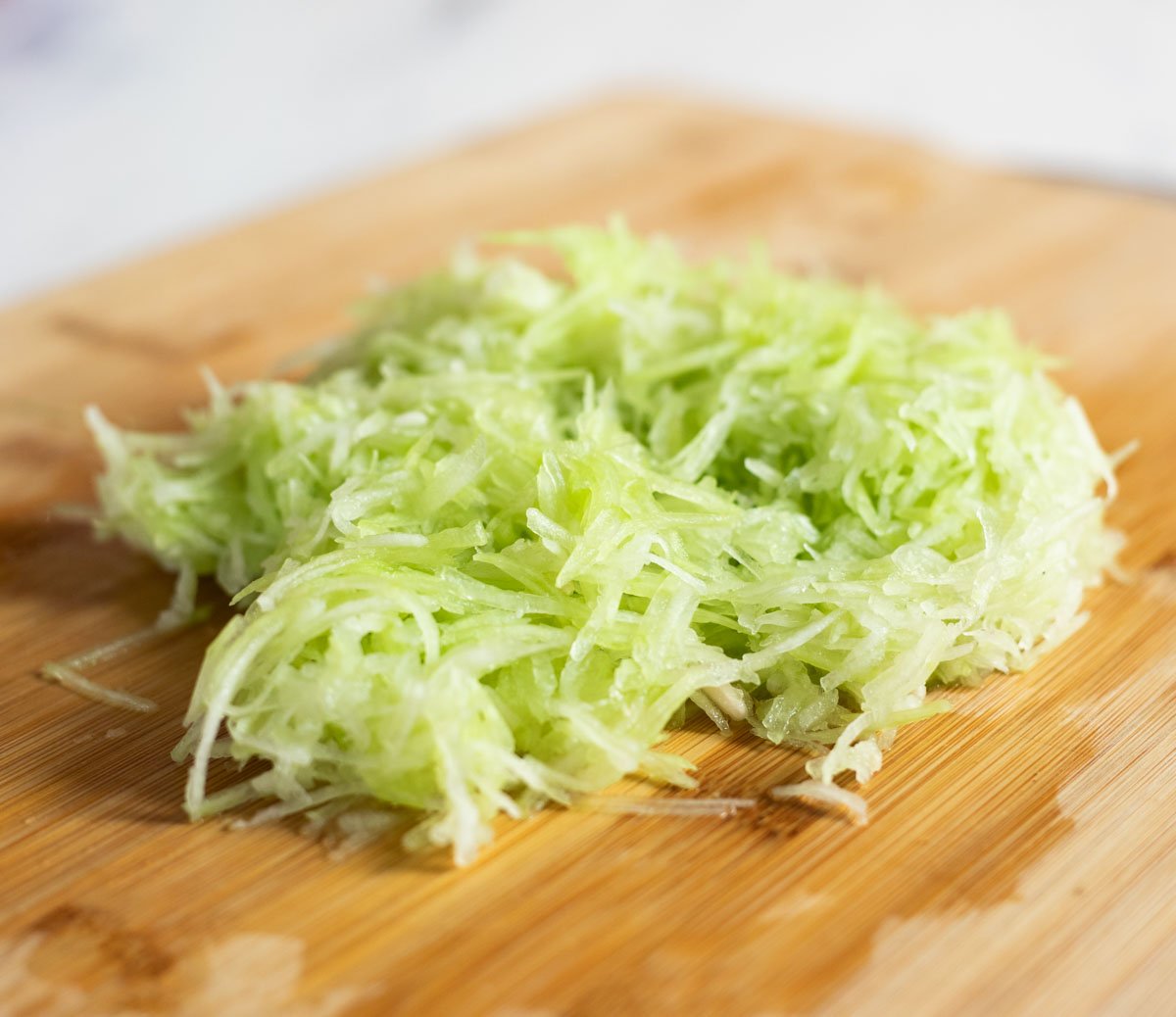
How to make Lauki Raita?
Many kids, and sometimes adults, are not fans of lauki. I never used to eat lauki as a kid, however now, it is a favorite. This creamy and delicious lauki raita will change your mind if you haven’t been a fan of lauki until now.
- Wash, peel, and grate the lauki. If there are big seeds in the middle, remove them and then grate the lauki.
- Add the grated lauki to the pressure cooker along with salt and water, and pressure cook.
- If you are using a stovetop pressure cooker, cook the lauki for 1 whistle.
- If you are using a saucepan, boil the lauki till it becomes soft and tender. Cover the lid for faster cooking.
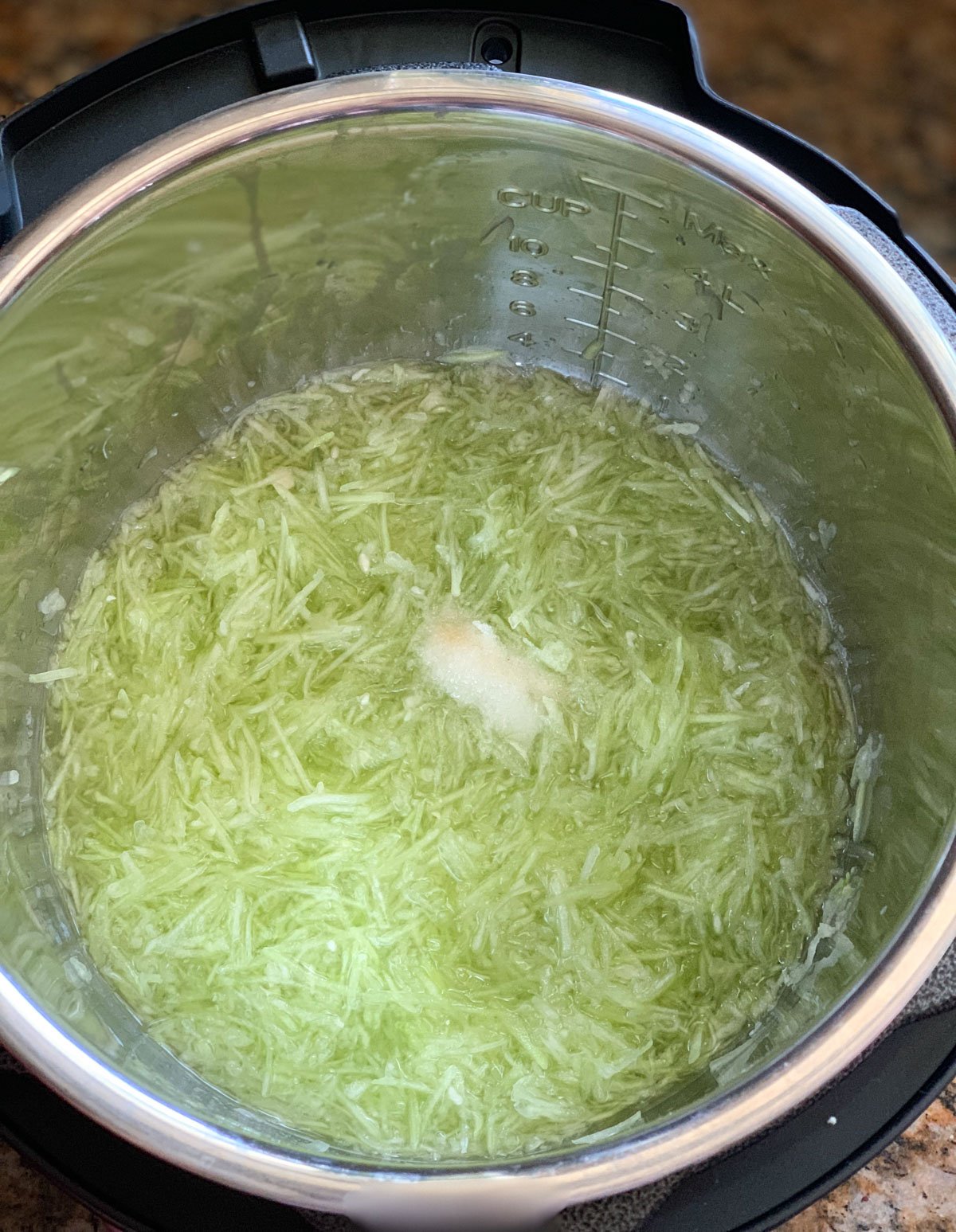
- When cooking in an Instant Pot or a stovetop pressure cooker, be sure to release the pressure quickly.
- Strain the lauki immediately using a strainer and keep it under running cold water for a few seconds. This helps to avoid overcooking the lauki.
- Press the lauki between your palms to strain the excess water and keep it aside.
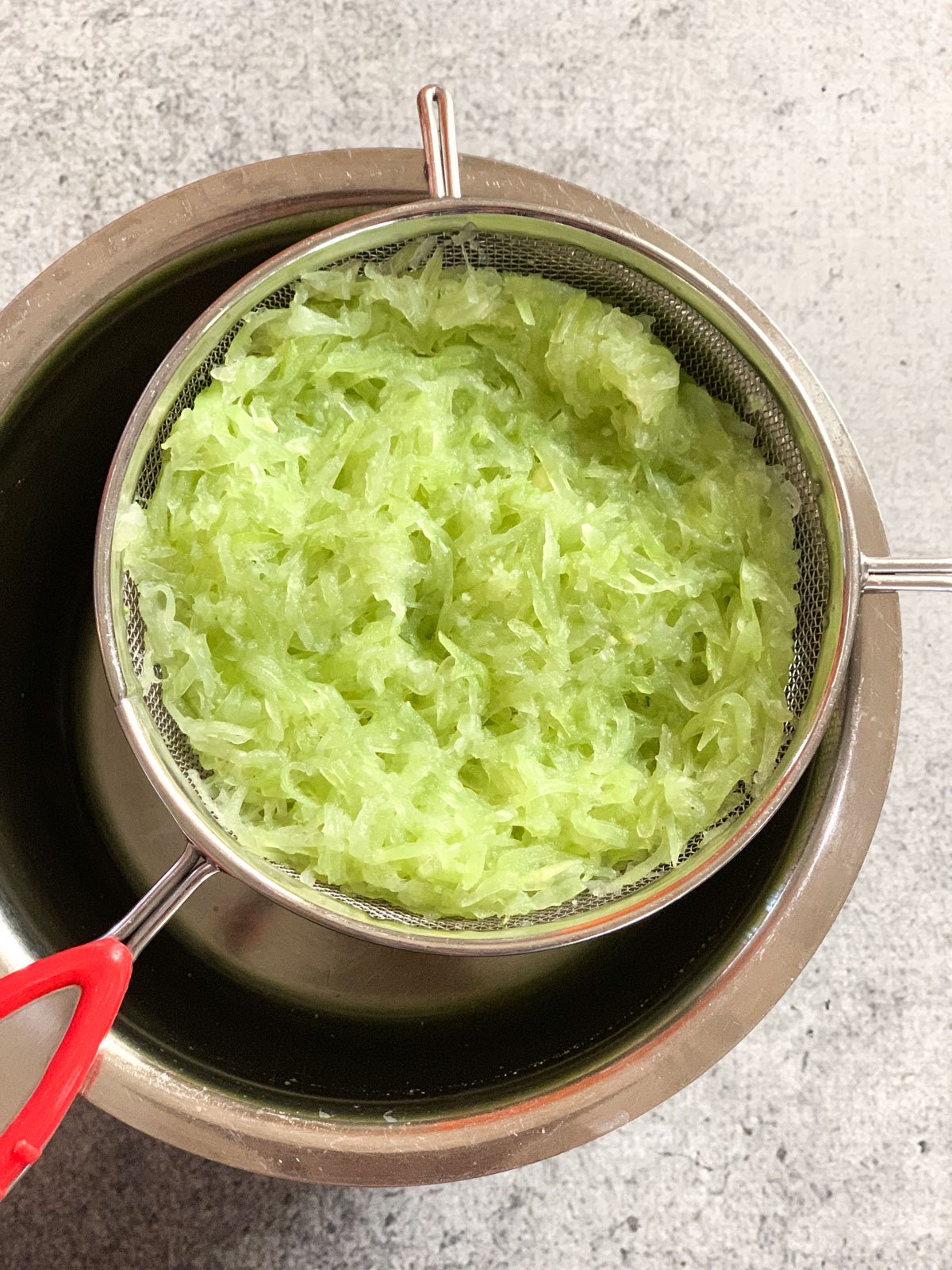
- Whisk the yogurt till it gets smooth and creamy, and keep it at a cool temperature.
- Add the strained lauki, green chili (optional), along with seasoning, to the whisked yogurt and stir well. I used roasted cumin powder, Kashmiri red chili powder, and black pepper.
- Garnish the cilantro and serve chilled.
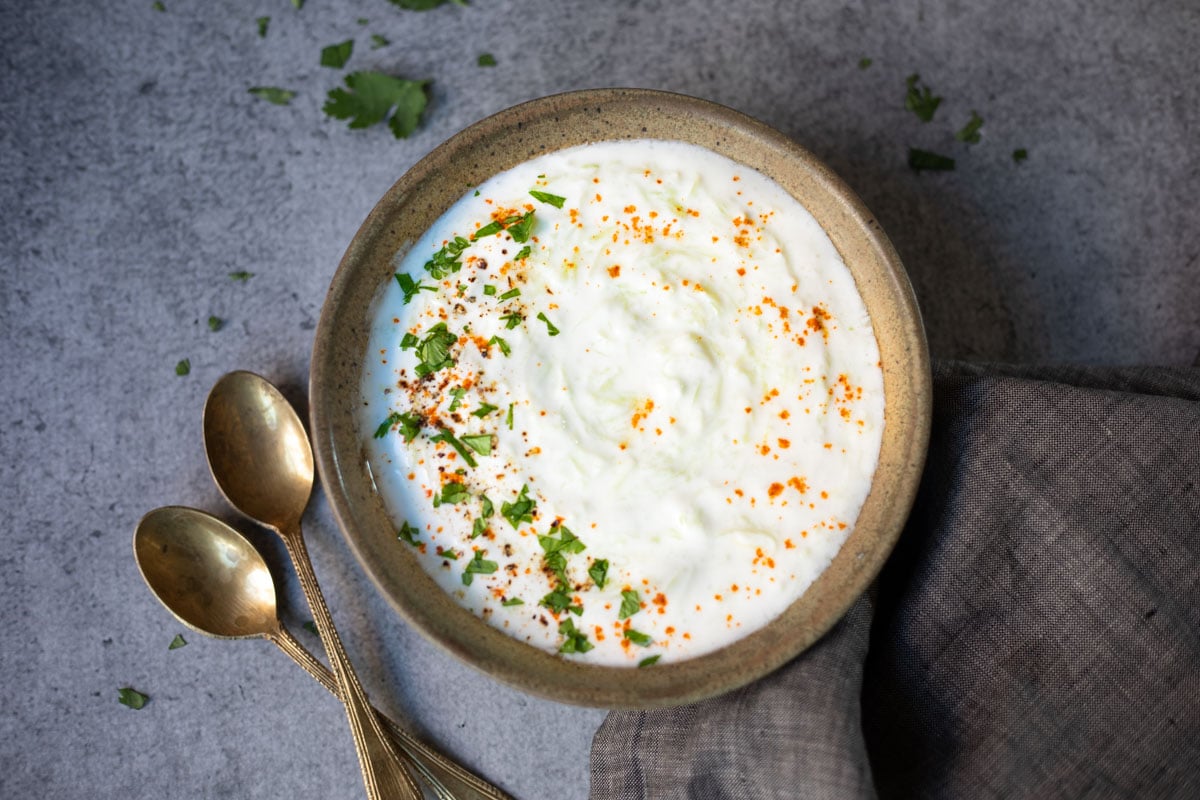
Tips to make Perfect Lauki Raita
- Add some grated cucumber to this lauki raita. You can also check out my cucumber raita recipe.
- You can also add a variety of seasonings, like a pinch of black salt and garam masala, to this raita to make it more flavorful.
- If you don’t want sliced green chilis, swap them for red chili powder, or skip them altogether when serving to kids.
- Use the leftover strained lauki water to prepare dough for rotis, parathas, or dals. It helps in adding that extra nutrition to the dish.
What to serve this Lauki ka Raita with?
Lauki raita can be served chilled with Aloo Gobi, Dal Makhani, and biryani. It is also an excellent accompaniment for parathas, theplas, and rotis.
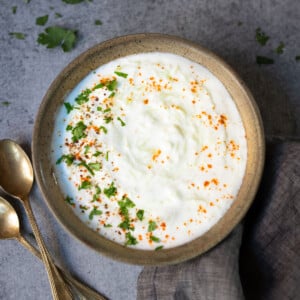
Lauki Raita (Bottle Gourd Raita)
Equipment
Ingredients
- 2 cups Bottle Gourd (Lauki), peeled and grated, 1 medium sized lauki
- 1/2 teaspoon Salt , adjust to taste
- 1 cup Water , for cooking
- 3 cups Yogurt, chilled
- 1 Green Chili Pepper, finely diced, optional
- Cilantro leaves, chopped, to garnish
Seasoning
- 1/2 teaspoon Roasted Ground Cumin (Jeera powder)
- 1/4 teaspoon Kashmiri red chili powder, adjust to taste, optional
- Black Pepper, to taste
Instructions
- Peel and grate the lauki. If the seeds in the center of the lauki are large in size, remove them before grating.
Preparing Lauki in pressure cooker
- Add the grated lauki, salt and water to the pressure cooker. Pressure cook for 0 minutes (1 whistle for stovetop pressure cooker or to cook in a saucepan, boil till lauki is tender and cooked. Cover with a lid for faster cooking.)
- Once the pressure cooking is done, quick release the pressure manually. Immediately strain the water from the lauki using a strainer.
- Keep the strainer under running cold water for 30 seconds, so the lauki does not overcook. Press the lauki between your palms to remove excess water. Keep aside.
Making Lauki Raita
- Whisk the yogurt till it is smooth and creamy.
- Add the grated lauki, green chili, and all the seasonings into the yogurt. Stir well.
- Serve chilled and garnish with cilantro before serving
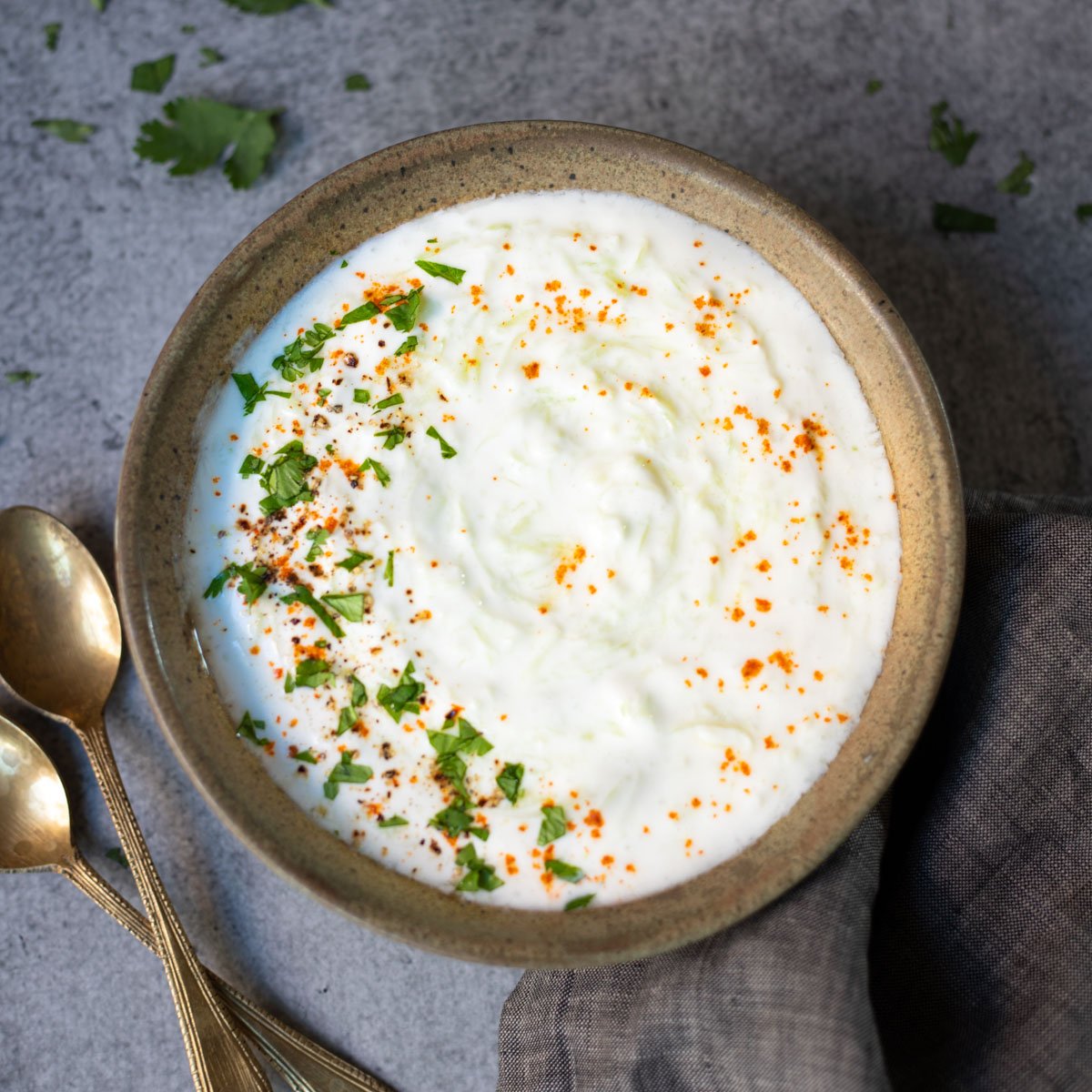
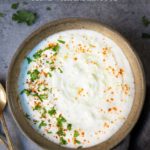
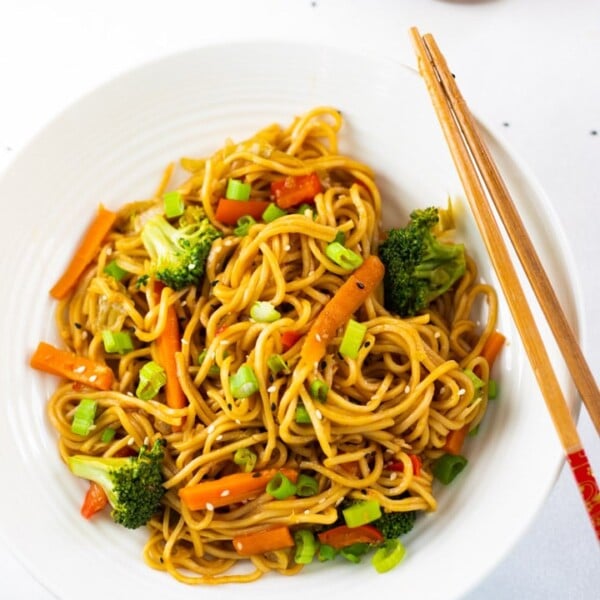
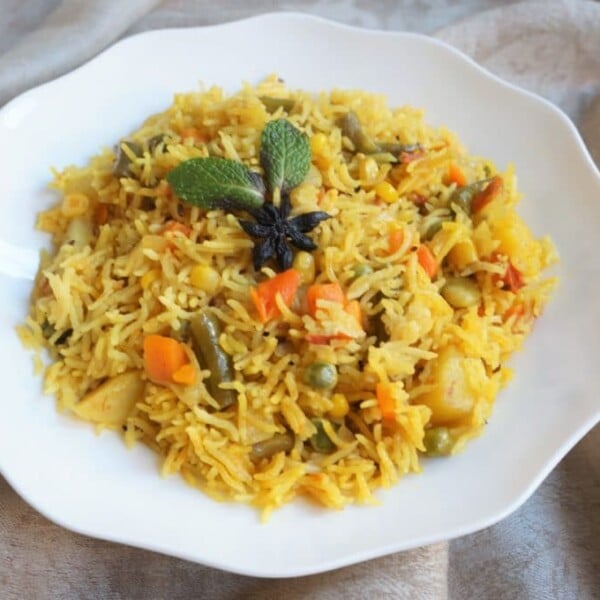
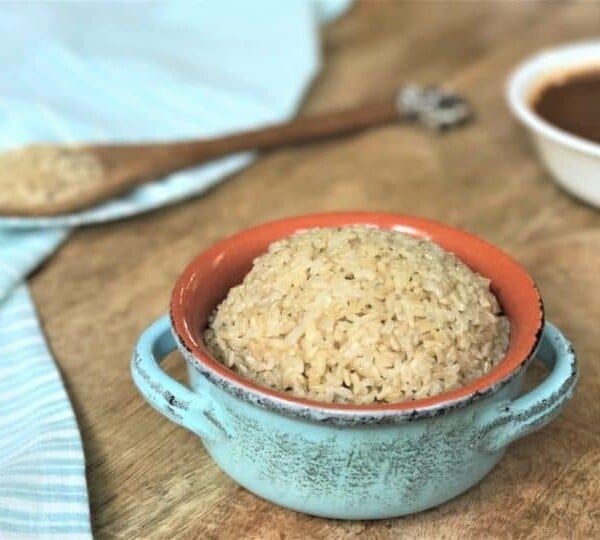
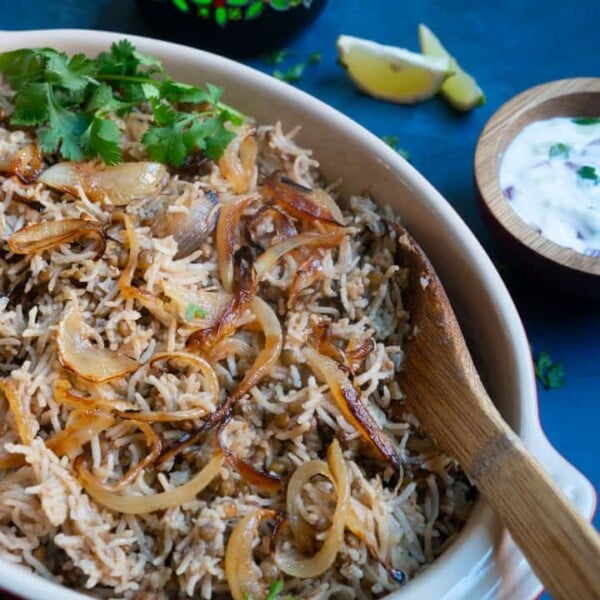








Sounds good and healthy
The strained water is what contains all the nutrients. The water can be used for dals/ curries. Instead of grating, I cube it into bite size prices and pressure cook. The water to be strained is much lesser when cubed
Hi Aditi – Cutting into cubes works too. My mom always grated, so that is what I wanted to share. I do mention to use the leftover strained water for other dishes.